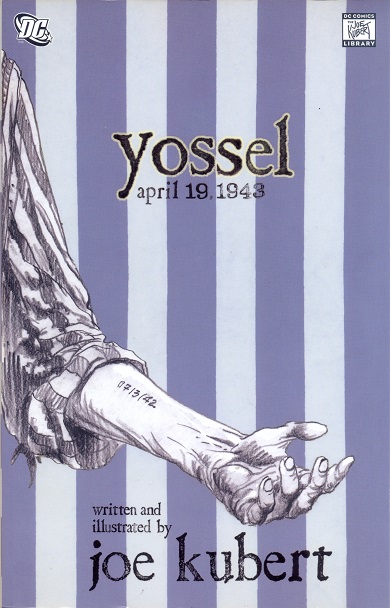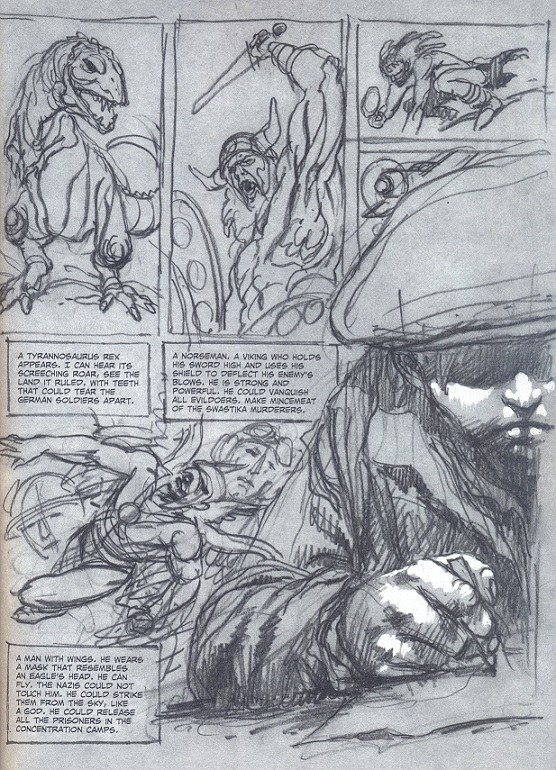The Holocaust is a theme that’s a bit weightier than the stuff we usually cover here at the Atomic Junk Shop, but since January 27 is International Holocaust Remembrance Day, I thought I’d do a brief write-up of what I think is one of the best treatments of this particular subject matter in comics form. I’m talking, of course, about Joe Kubert’s Yossel: April 19, 1943.

I’ve mentioned this one, briefly, in previous posts (here and here), but I think merits a little more attention.
The story is set in the Warsaw Ghetto in Poland in the early 1940s, where hundreds of thousands of Jews had been herded and confined by the Nazis. It is narrated in the first person by a teenage boy named Yossel, whose family was forced to leave their home in another town and move to the ghetto.
Yossel has quite a talent for drawing, and uses any scrap of paper he can find to record all of the misery and horror he sees around him in a daily basis, but also to escape to different worlds, by drawing the things he loves, like dinosaurs, mythical beings and heroes similar the American ones he’d seen in newspaper comic strips as a boy.

Yossel eventually becomes involved with some of the members of the resistance in the ghetto, and one particularly effective, and brutal, section of the story involves him meeting a man who had managed to escape from a concentration camp. He describes what he experienced and saw there to Yossel, who then also turns them into drawings.

Yossel’s talent was also noticed by the Nazis, when – during an inspection of his family’s apartment – an officer spots a few sketches of superheroes done by him. He likes what he sees, because he thinks they’re images of the Nazi ‘superior race.’

He has Yossel come to their headquarters to draw more of these, as well as portraits of the various officers. Yossel, of course, reports everything he sees and hears there to the resistance leaders, who are planning an uprising…

The grim nature of the story is underscored by Kubert’s unembellished pencil sketches, to make it seem as though we are looking at pictures drawn by the fictional Yossel while he was in the ghetto (the art is, nonetheless, gorgeous).
Yossel is basically a ‘what if’ story, in which Kubert speculates what his life would have been like had his family not managed to emigrate from Poland to the United States in 1926, when he was still a baby. So Yossel is a version of the young Kubert who goes through the hell of the Holocaust. However, as Kubert wrote in the introduction to the story, “It is a work of fiction, based on a nightmare that is fact.”


Looks intense. A shame our library doesn’t have it, but I’ll put it on my list to look for.